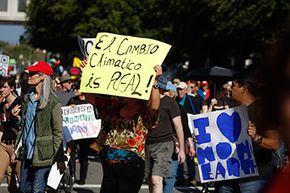When "Modern Family" Colombian bombshell Gloria Pritchett tells off her older husband Jay in a mixture of Spanish and English — "Privacy in esta casa!" — you're watching code switching in action.
Code switching generally refers to the practice of moving back and forth between two languages while conversing. The typical code switcher is a bilingual person who substitutes a word or phrase from one language while speaking mostly in the other. But anyone can code switch. Many an American who speaks only English has uttered phrases such as, "Adios, my friend," or "C'est la vie," during conversation, both of which are also examples of code switching [source: Greene].
Advertisement
Dialing up or down an accent, or speaking in the vernacular, are forms of code switching, too. A native Georgian who has lived much of her life in Ohio may suddenly begin to pepper her speech with "y'all" and adopt a thick drawl upon returning home for a visit. Similarly, a person from Appalachia may greet work colleagues with a friendly "How are you?" Yet if someone calls from his native region, he may answer the phone, "Howdy-do! How're you'uns a-doin'?"
With regard to bilingualism, many people believe that those who code switch by swapping a word or phrase for one in another language are speaking this way because they don't know their second language all that well, or else they are careless or lazy. But several studies show code switching is actually more often done by highly fluent speakers and is a means of using all of the linguistic tools at their disposal [source: Fought].
We're all constantly changing the way we express ourselves; how and why we do so depends on everything from culture to language to self-identification and the people we happen to be around.
While code switching is a linguistic term, recently it's come to have a bigger meaning in some circles. It's not just a matter of using a different language (or phrasing) depending on your conversational partner. Some people use it to define switching between two modes of any behavior depending on whom you're around. For instance, author Marlon James wrote in The New York Times about code switching his clothes (leaving the Bronx in a baggy pants and oversized T-shirt and changing into skinny jeans and a tight shirt when he got to Manhattan) for fear of his family finding out he was gay.
With this in mind, let's see how code switching first began.
Advertisement




